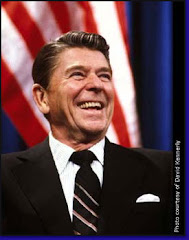Weekly Opinion Editorial
Life, Fortune and Sacred Honor!
by Steve Fair
On Thursday, we celebrate the 237th anniversary of
the Declaration of Independence. One of
the most widely held misconceptions about the Declaration of Independence is
that it was ‘signed’ on July 4, 1776, but in fact that is the date Congress
approved the final text of the Declaration. It wasn’t actually signed until
August 2, 1776.
Independence Day is a national holiday, so most people will
be off work. They will spend time with
family, eat hot dogs, watch parades, and pop fireworks. The sad part is that many Americans don’t
fully understand the importance of the Declaration of Independence in our
country’s history. Here are some facts
about this founding document you may not be aware of.
When the Declaration was signed, America was a small country. The population of the nation was around 2.5
million- significantly less than the current population of Oklahoma.
When the Declaration of Independence was adopted, the Thirteen Colonies
and Great Britain
had been at war for more than a year. After Congress approved the text, they
sent a copy to General Washington, who was fighting the redcoats near New York City. Washington
had the Declaration read to the troops on July 9. Washington
hoped the Declaration would inspire the soldiers, and encourage others to join
the army, which it did.
Thomas Jefferson is often called the “author” of the
Declaration of Independence, but he wasn’t the only person who
contributed. Jefferson
was a member of a five-person committee appointed by the Continental Congress
to write the Declaration. The committee included Jefferson, Benjamin Franklin,
John Adams, Robert Livingston, and Roger Sherman. Interestingly, Livingston
never signed it. He believed that it was too soon to declare independence and
therefore refused to sign.
Jefferson said that several
authors influenced him in the writing of the document. John Locke, an English physician and philosopher,
whom Jefferson called one of "the three
greatest men that have ever lived" was a major influence. Most scholars trace the phrase, “life,
liberty and the pursuit of happiness, to Locke's ‘theory of rights.’ There is no doubt the Magna Carta also
influenced Jefferson.
Future President John Adams wrote the famous preamble- When in
the course of human events, it becomes necessary for one people to dissolve the
political bands which have connected them with another….
There were fifty six(56) men who signed the Declaration,
including two future presidents, three vice presidents, and ten members of the
Congress. Nine of those signers died before the American Revolution ended in
1783. The largest and most famous
signature is that of John Hancock, President of the Continental Congress. The
youngest signer was Edward Rutledge (age 26). Benjamin Franklin (age 70) was
the oldest.
Twenty-four of the signers were
lawyers and jurists, eleven were merchants and nine were farmers. They signed
the Declaration of Independence knowing that the penalty would be death if they
were captured. At the time of the
signing, the colonists were British subjects and they were rebelling against
own government! That may be why our
founding fathers had a hatred for standing armies, and included the second
amendment in the Constitution to insure private citizens could be armed.
What happened to the fifty six men
who signed the Declaration of Independence?
Five signers were captured by the British as traitors, and tortured
before they died. Twelve had their homes ransacked and burned. Two lost their
sons in the revolutionary army, another had two sons captured. Nine of the
fifty six fought and died from wounds or hardships of the revolutionary war.
The Declaration ends with these words; “And for the support of this Declaration, with a firm reliance on the
protection of divine Providence,
we mutually pledge to each other our Lives, our Fortunes and our sacred Honor.”
It’s not certain America today has leaders who are
willing to pledge their life, fortune and honor to keep our country free. Thank God for our founders. They truly did give their all for liberty. To read the Declaration, a mere 1,337 words, go to http://www.archives.gov/exhibits/charters/declaration_transcript.html




1 comment:
Thank you! I will be sharing this on the Logan County GOP Website.
Twana Blevins
Post a Comment